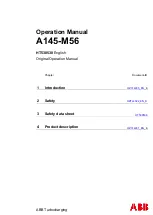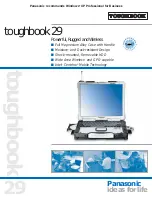
This is a publication by Conrad Electronic SE, Klaus-Conrad-Str. 1, D-92240 Hirschau (www.conrad.com).
All rights including translation reserved. Reproduction by any method, e.g. photocopy, microfilming, or the capture in
electronic data processing systems require the prior written approval by the editor. Reprinting, also in part, is prohibited.
This publication represent the technical status at the time of printing.
Copyright 2019 by Conrad Electronic SE.
*2138452_V1_0919_02_dh_m_short_EN
b) Additional Information about Lithium Batteries
Modern batteries with lithium technology do not only have a clearly higher capacity
than NiMH or NiCd rechargeable battery packs but they also have a considerably
lower weight. This makes this type of rechargeable battery very interesting for ap
-
plication in model construction; so-called LiPo batteries (lithium-polymer) are often
used here.
Rechargeable lithium batteries require special care when charging/discharging, as
well as during operation and handling.
For this reason, we would like to provide you with some information in the sections
below about the dangers and how you can avoid them, thus helping such batteries
to maintain their performance for an extended period of time to come.
•
The outer shell of many rechargeable lithium batteries is only made of a thick foil
and therefore very sensitive.
•
Never destroy or damage the battery, never let the battery fall and do not pierce
the battery with any objects! Avoid any mechanical strain on the battery; never pull
the connection cables of the battery! There is a risk of fire and explosion!
•
These guidelines must also be observed when the battery is inserted into the
model or when it is removed from the model.
•
Ensure that the battery does not overheat during usage, recharging, discharging,
transport or storage. Do not place the battery next to sources of heat (e.g. speed
controller, motor), keep the battery away from direct sunlight. There is a risk of fire
and explosion if the battery overheats!
•
The battery must never heat up to more than +60 °C (observe any additional
information from the manufacturer!).
•
If the battery is damaged (e.g. after the crash of an aircraft or helicopter model) or
the exterior cover is soaked/has expanded, do not use the battery. Do not charge
it anymore. There is a risk of fire and explosion!
Handle the battery with care, use suitable protective gloves. Dispose of the rechar
-
geable battery environmentally compatibly.
Never keep such rechargeable batteries in an apartment or a house/garage any
-
more. Damaged or bloated lithium rechargeable batteries may catch fire suddenly.
•
Only use a suitable charger to charge lithium batteries or use the correct charging
procedure. Due to a risk of fire and explosion, conventional chargers for NiCd,
NiMH and lead batteries must not be used!
Always choose the right charging procedure depending on rechargeable battery.
•
When charging a lithium battery with more than one cell, always use a so-called
balancer (one is already integrated into the supplied charger).
•
Charge LiPo batteries with a max. charging current of 1C (if not indicated other
-
wise by the battery manufacturer!). This means that the charging current may not
exceed the capacity value imprinted on the battery (e.g. battery capacity 1000
mAh, max. charging current 1000 mA = 1 A).
With LiFe, LiIon and LiHv batteries, you must observe the instructions of the bat
-
tery manufacturer.
•
The discharging current must not exceed the value printed on the battery.
For example, if a value of “20C” is printed on a LiPo battery, the max. discharging
current is 20 times the battery’s capacity (e.g. battery capacity 1000 mAh, max.
discharging current 20C = 20 x 1000 mA = 20 A).
Otherwise, the battery will overheat, causing deformation/bloating of the battery
or explosion and fire!
The printed value (e.g “20C”) does not generally refer to the constant current, but
to the maximum current that the battery is capable of producing in the short-term.
The constant current therefore should not be higher than one half of the given
value.
•
Observe that the individual cells of a lithium rechargeable battery must not be
deep-discharged. A deep discharge of a lithium rechargeable battery will lead to
permanent damage/destruction of the rechargeable battery.
If the model does not provide protection against total discharge or possess a vi
-
sual display indicating a low battery, remember to switch off the model in time.
Disposal
a) Product
Electronic devices are recyclable and should not be disposed of in household waste.
Dispose of the product according to the applicable statutory provisions at the end of
its service life.
b) Batteries/Rechargeable Batteries
You as the end user are required by law (Battery Ordinance) to return all used batteries/re
-
chargeable batteries. Disposing of them in the household waste is prohibited.
Batteries/rechargeable batteries that contain hazardous substances are labelled
with the adjacent icon to indicate that disposal in domestic waste is forbidden. The
descriptions for the respective heavy metals are: Cd = cadmium, Hg = mercury, Pb
= lead (the names are indicated on the battery/rechargeable battery e.g. below the
rubbish bin symbol shown on the left).
You may return used batteries/rechargeable batteries free of charge at the official collection
points in your community, in our stores, or wherever batteries/rechargeable batteries are sold.
You thus fulfil your statutory obligations and contribute to the protection of the environment.
Technical Data
Operating voltage ............................Mains voltage input: 100 - 240 V/AC, 50/60Hz
Direct voltage input: 11 - 18 V/DC
Never use both inputs at the same time. This may damage the charger. Loss of
guarantee/warranty!
Charging/discharging channels .......1
Charge current .................................0.1 - 10.0 A (depending on the cell number and
rechargeable battery type)
Charging output ...............................max. 80 W
Discharge current ............................0.1 - 2.0 A (depending on the cell number and
rechargeable battery type)
Discharge output .............................max. 5 W
Suitable rechargeable batteries .......NiMH/NiCd, 1 - 15 cells
LiPo/LiIon/LiFe/LiHv, 1 - 6 cells
Pb, 1 - 10 cells (rated voltage 2 - 20 V)
Discharge current for balancer ........400 mA per cell
Delta-U-recognition ..........................yes (for NiMH/NiCd, adjustable 5 - 20 mV/cell)
Maintenance charge current ............yes (for NiMH/NiCd, adjustable 50 - 200 mA, can be
switched off)
Safety timer .....................................yes (10 - 720 minutes, can be switched off)
Fan integrated .................................yes
Ambient conditions ..........................Tempe10 °C to +40 °C; humidity 0% to 90%
relative, non-condensing
Weight .............................................396 g
Dimensions ......................................130 x 115 x 61 mm (W x D x H)





















